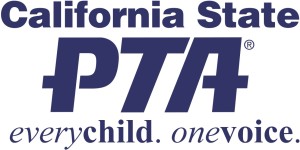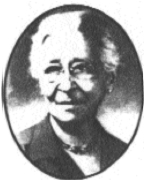Areas for PTA Involvement
Chairman and Committee Procedures
If the event is held in collaboration with community organizations or other PTAs, each participating unit, council or district PTA should follow the proper approval procedures specified below.
California State PTA strongly urges unit, council or district PTAs to refrain from serving alcoholic beverages at PTA functions. PTAs may not engage in the sale of alcoholic beverages. (See the Insurance and Loss Prevention Guide, Red Section, Alcohol; and Toolkit, Alcohol and PTA Events)
Preliminary Planning
Discuss and obtain approval to hold an event from the PTA executive board and principal or school representative.
Ensure the event will not conflict with other unit, council or district PTA observances.
Obtain a vote of approval for the event at a meeting of the association. Include a motion to disburse monies to cover the estimated cost involved.
If being held off campus, obtain permission for facility use from appropriate manager. If asked to sign a Hold Harmless Agreement, contact the California State PTA insurance broker.
PTA president appoints the event chairman and committee. Determine the goals of this committee. Articulate what the committee hopes to accomplish with the activities.
Appoint several members to the planning committee. Unit bylaws and standing rules may have information to guide the project. If possible, include the principal or a faculty member, the public relations/publications coordinator (if there is one), and a student (Event Planning Worksheet).
Review event material—make copies as needed. From previous chairman or committee, obtain the procedure book, National PTA Quick-Reference Guide, Our Children, and PTA in California.
Discuss budget needs with president and treasurer. Ideally, the budget should be planned with a line item for the event. The planned activities must stay within the budget. If necessary, the community may be asked to partner by donating materials, hospitality items and perhaps even a grant or sponsor to underwrite the planned activity or event. Be realistic in estimating the costs. Remember to include possible custodial costs, publicity, and postage.
Decide on a focus area, if any. Brainstorm ideas with the committee. Decide on activities that have the best chance for good participation from the student-body, the parents, and the community. If the PTA has never held this event before, do not overwhelm the faculty with activities.
Keep in mind past traditions but also investigate new ways to hold an appropriate event that will fit the school and community.
Select a theme as the major focus, and decide on the type of program (e.g., family dinner, musical program).
As early as possible, check school calendar and decide on a date.
The Americans with Disabilities Act requires that disabled persons must be reasonably accommodated by modifying policies, making physical changes and obtaining equipment to assist their participation in any activity. For PTA meetings/events, this could include seating to accommodate an attendant accompanying a member or reserved seating in a location to accommodate a member’s special need, providing written handouts to supplement discussion and/or providing qualified readers or interpreters for individuals having a hearing or sight impairment.
Discuss rules and expectations with facility management. Put all agreements in writing. Determine if permission or permits from school district or city are needed.
Notify parents and community to “save the date” for the event. Also send notes to past and present PTA presidents, leaders and award recipients, and school district and community members.
Notify staff, explaining event goals and requesting their support.
Schedule at least three committee meetings prior to event.
Never sign a Hold Harmless Agreement on behalf of the unit, council or district PTA until the California State PTA insurance broker has been consulted. (Hold Harmless Agreement)
Transportation Planning
When local PTA units secure transportation for participating students for events, local PTA units must comply with the ADA which does not permit services that are different or separate from that provided to other individuals without disabilities, unless such action is necessary to provide an individual with a disability or class of such individuals with a good, service, facility, privilege, advantage, or accommodation or other opportunity that is as effective as that provided to others.
If the local PTA unit secures accessible transportation to events, as described above, and it fails to arrive, the PTA shall make every reasonable effort to secure alternative accessible transportation to enable students with mobility disabilities to still attend. In no instance shall a local PTA unit inform students with mobility disabilities that they must secure their own transportation.
A student with a disability who requires a one-to-one aide as part of his or her Individualized Education Program (“IEP”) shall be permitted to attend any PTA event with his or her aide, as the student’s family deems necessary. Further, no fee shall be charged for any PTA event ticket for the student’s aide. For any event where a student requires an aide, the cost of the aide’s transportation shall be borne by the PTA. PTA may ask to be reimbursed by the event venue, affiliated school and/or school district.
Event Development
Begin three months in advance, if possible. Develop a timeline utilizing check sheets. Assign committee members specific duties.
Service Providers/Speakers/Program Participants (At Least Two People)
One person should be designated as the contact person on invitation letters.
One person should assist with paperwork (Service Provider/Speakers/Program Participants Check List).
Publicity Campaign (At Least One Person)
Publicity may include the use of one or more of the following:
News releases
PTA newsletter articles
Posters for placement at local business locations
Radio/cable television PSA “spots”
Website promotion
Email alerts
Handouts/Fliers (At Least One Person)
Handouts may include the following:
Fliers to parents
Attendee record form
Permission slips, if necessary
Service provider station signs
Operations (At Least One Person)
Responsibilities include:
Overseeing facility, equipment, and overall operation.
Checking all participating service provider/speaker/program participant requirements.
Coordinating with school district and school custodian.
Ensuring all equipment is in working order.
Consulting with appropriate facility management.
Considering whether additional service providers are needed and reviewing other logistic issues.
Cleaning up after the event.
Outreach (At Least One Person)
This committee member will
Organize volunteers and coordinate hospitality.
Select invitees from the local area. Send a letter of invitation requesting participation, including a response due date.
Pre-Crunch
Begin two months in advance.
Send follow-up letter to confirm service provider participation, including a map of the school and parking location (See Sample Participant Response Form below).
Develop fliers to inform parents and community of the event.
Develop news releases.
Request equipment from school district or facility manager to meet service provider needs.
SAMPLE PARTICIPANT RESPONSE FORM
(Name) PTA/PTSA (Program)
Thank you for agreeing to participate in the (Name) PTA/PTSA (Program). Please mail the completed form to (Name) PTA/PTSA, (Address) no later than (date).
__ Yes, I will participate in the (name) PTA/PTSA (Program) on (date).
Organization/Participant Name: _______________________________________________________________
Address: _______________________________________________________________
Daytime Phone: (_______)_______________
Evening Phone: (_______)_______________
Email: ______________________________
Service and information to be provided:
Please include a detailed description of the services you will provide.
__________________________________________________________________
__________________________________________________________________
__________________________________________________________________
Please list any equipment, audio-visual, space or special requirements you have.
__________________________________________________________________
__________________________________________________________________
__________________________________________________________________
__ No, I will be unable to participate in the (name) PTA/PTSA (Program), but I would be interested in providing related materials. Please list materials which will be provided.
_________________________________________________________________
_________________________________________________________________
Fig. 7-1 Sample
Crunch Time
Begin one month in advance.
Be sure to have sufficient tables and chairs as required by participating service providers. This information will be available upon receipt of response form.
Provide custodian/facility manager with a detailed drawing of the layout for tables and chairs.
Plan for access for the disabled.
Recruit and schedule volunteers. Utilize nursing schools, dental schools, and public health agency health promoters.
Plan refreshments, such as coffee and donuts in the morning or a light lunch for all participating service providers and volunteers.
Check to ensure all equipment requirements can be met.
Distribute event fliers and email announcements to parents and community.
Prepare service provider station signs.
Day of the Event
Have nametags ready for all service providers/speakers/program participants and volunteers.
Check to make sure hospitality area is in order and refreshments prepared.
Check setup of the event stations and all audio-visual equipment.
Welcome the service providers/speakers/program participants and be sure to give them an evaluation sheet (Evaluation Form) that should be collected before they leave at the end of the event.
Have volunteers sign in, including addresses, telephone numbers, and email addresses.
Have at least two designated troubleshooters for the day, and make sure that the service providers and volunteers know who they are.
Clean up the facility and leave it in as good or better condition than it was.
After the Event
Tabulate the evaluations.
Send thank you notes to all participating service providers/speakers/program participants and volunteers.
Write an event report and place it in the procedure book. Include ideas for changes gleaned from the evaluations and comments from participants.
- Did the activities help to accomplish goals?
- Was there good participation from the faculty and the parents?
- Did the kids enjoy it?
- What are the recommendations for next year?

 Alice McLellan Birney
Alice McLellan Birney Phoebe Apperson Hearst
Phoebe Apperson Hearst Selena Sloan Butler
Selena Sloan Butler